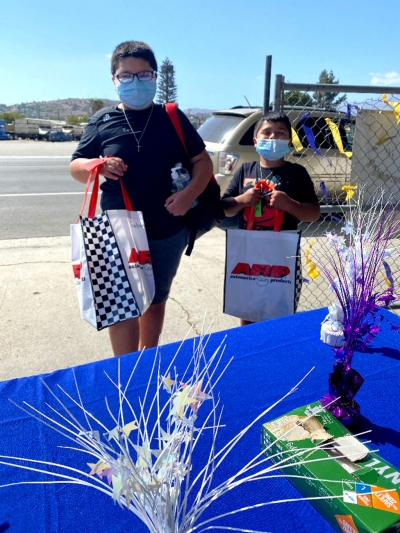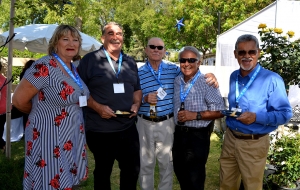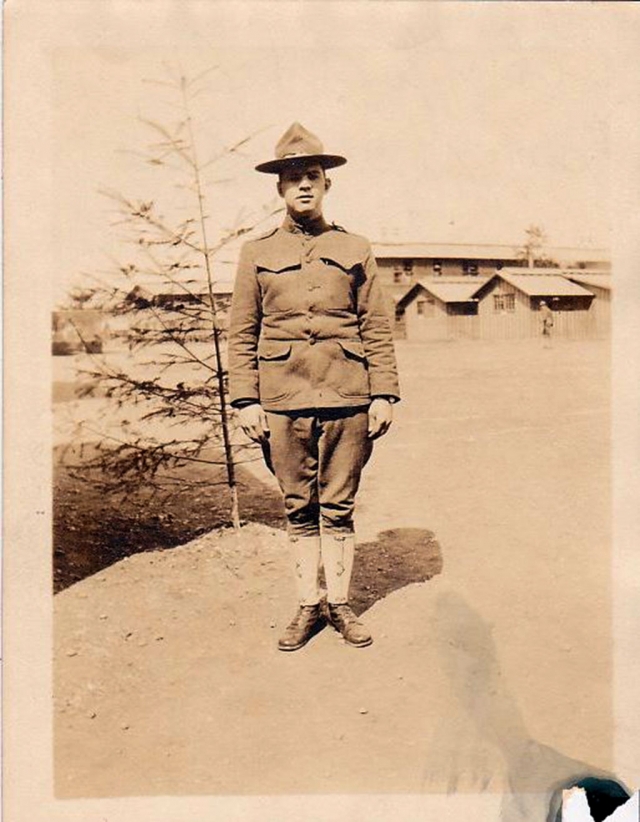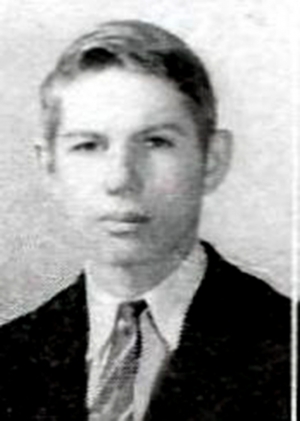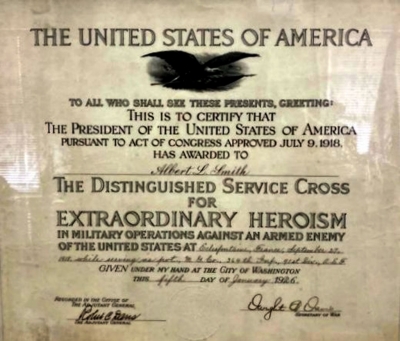|
By Ventura County Sheriff Department — Wednesday, May 26th, 2021
In mid-March of 2021, an agricultural corporation identified as the Winchester Water Well group contacted deputies from the Moorpark Sheriff’s Station and reported that they were the victims of embezzlement by their property manager. The Winchester Water Well group was comprised of five ranch owners whose property was located in the unincorporated area just outside the city of Moorpark. Deputies obtained the basic facts, completed a theft report, and the case was forwarded to the Moorpark Investigations Bureau. Over the next several weeks, investigators learned that the ranch owners hired a property management firm that specialized in agricultural land management, identified as Progressive Land Management to manage and service an irrigation water well for the ranchers. The ranch owners initially contracted with Progressive Land Management in mid-2014. Investigators determined that over the course of several years, the owner of Progressive Land Management, identified as Michael Mobley of Oxnard, stole tens of thousands of dollars from the ranch owners and falsified bank documents in order to conceal the thefts. On the morning of May 20th, detectives from the Moorpark Station contacted Mobley as he was leaving his home in Oxnard and arrested him for the thefts. Detectives then returned to Mobley’s home and served a search warrant and seized additional evidence related to the thefts. Simultaneously, detectives from the Thousand Oaks Special Enforcement Unit, working in conjunction with Moorpark Detectives, served a search warrant at the offices of Progressive Land Management in the city of Santa Paula, where additional evidence was located and seized. To date, Detectives determined that Mobley embezzled in excess of $40,000.00 from the Winchester Well Water Group. However, the investigation is ongoing and there are potentially other clients who were victimized, who have yet to be identified or come forward. Mobley was booked at the Ventura County Main Jail on the charge of 487(a) PC / Grand Theft with bail set at $10,000.00. Nature of Incident: Arrest of Property Manager for Embezzlement of Client Funds |
Now Hiring: Deputy City Clerk
The City of Fillmore is seeking a detail-oriented and highly organized professional to join our City Clerk’s Office as Deputy City Clerk. This key role supports City Council operations, maintains official records, ensures legal compliance, and helps uphold transparency in local government. If you’re passionate about public service, governance, and supporting elected officials, we encourage you to apply. Learn more and apply at www.fillmoreca.gov.
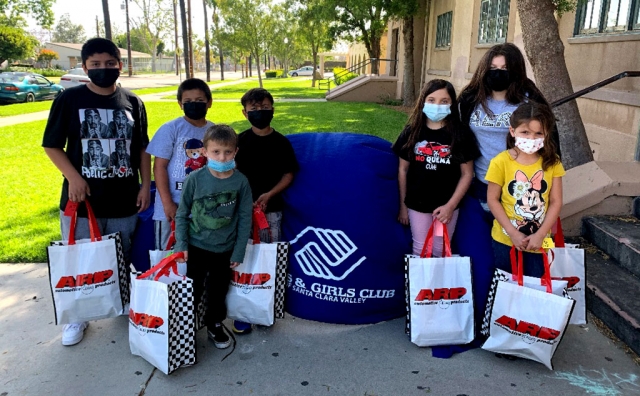 On Thursday, May 20th, the Santa Clara Valley Boys & Girls Club gave away art supplies and books to the kids at the Fillmore, Piru and Santa Paula club houses. Pictured are Joezyha Banales, Art Escamilla, Jayden Escamilla, Christopher Ramos, Alina Ruiz, Jazlyn Escamilla, and Jaylah Escamilla. Photos courtesy Boys & Girls Club of Santa Clara Valley. Enlarge Photo By Anonymous — Wednesday, May 26th, 2021
By Boys & Girls Club of Santa Clara Valley On Thursday, May 20th, 300 children in the Fillmore, Piru, and Santa Paula communities got to take home a bag full of art supplies and Disney books thanks to a partnership between Boys & Girls Club of Santa Clara Valley and GMH Foundation! A HUGE thank you to Molly Valtin and Kelly Schau, not only for assembling the bags, but for believing in our mission to enable all young people, especially those who need us most, to reach their full potential as productive, caring, responsible citizens! |
|
By Anonymous — Wednesday, May 26th, 2021
The Ventura County Sheriff’s Office wants to remind residents to be cautious when making purchases or conducting business deals online. We have seen a recent increase in scams involving home rentals as well as scams involving the online purchase of puppies or kittens. The scammers will request payment or deposits up front and promise delivery. They will then request additional payments for shipping or other types of fees, often with the promise that the money will be refunded at a future date. The victim is left waiting for a pet or set of keys that never come. These are some of the common indicators of a scam: Nature of Incident: Home Rental and Pet Scams Ventura County Crime Stoppers will pay up to $1,000 reward for information, which leads to the arrest and criminal complaint against the person(s) responsible for this crime. The caller may remain anonymous. The call is not recorded. Call Crime Stoppers at 800-222-TIPS (8477). |
|
By Anonymous — Wednesday, May 26th, 2021
 On Saturday, May 15th, the City honored Mental Health Awareness Month by hosting a Mental Health Fair in front of Fillmore City Hall. Pictured are Council Members Lynn Edmonds, Christina Villaseñor and Mayor Mark Austin presenting the Mental Health Awareness proclamation to Maya Lazos, Ventura County NAMI Walks 2021 Captain. Also pictured is Dylan Garcia, local musician and singer and mental health advocate. Enlarge Photo |
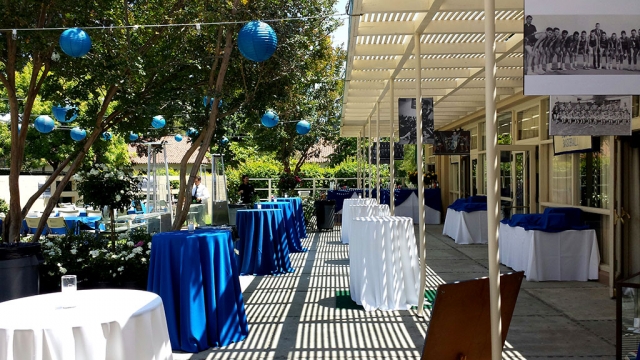 On Saturday, October 2nd, Fillmore High Alumni will be celebrating their 108th Annual Fillmore High Alumni Dinner. The Covid-19 pandemic put a hold on last year’s event, but this year’s is a go and will be held in front of Fillmore’s City Hall. Pictured are photos from the previous year’s alumni dinner. Photos courtesy Fillmore High Alumni Association. Enlarge Photo By Anonymous — Wednesday, May 26th, 2021
By Fillmore High Alumni Association Please join us for the Annual Fillmore High Alumni Dinner (Celebrating 108 Years) on Saturday, October 2nd, 2021 from 3:00pm to 11:30pm. This year's dinner will take place at the Fillmore City Park, and in front of City Hall located at 250 Central Ave in Fillmore. In the past we have served well over 600 Alumni and their guests and we expect to do the same this year. Your paid dinner reservation guarantees your entry to the event, along with Light hors d’ oeuvres (for the early arrivals), Dinner, coffee, tea, and water. New this year will be a live Band along with D.J. for your dancing and listening pleasure. This event has sold out in the past, so we encourage you to confirm your reservations soon by going online, and paying for your reservations. www.fillmorehighalumni.com/events With so many classes having their reunions at the annual dinner now, we are expecting another sell out. Classes celebrating their reunions at the Dinner this year are the Classes of 1960, 1965, 1970, 1971, 1980, 1981 and 1990! Make your plans now to come celebrate our Home Town, our long time friends, our Scholarship program, and our High School Alma Mater. About The Fillmore High Alumni Association |
|
By Anonymous — Wednesday, May 26th, 2021
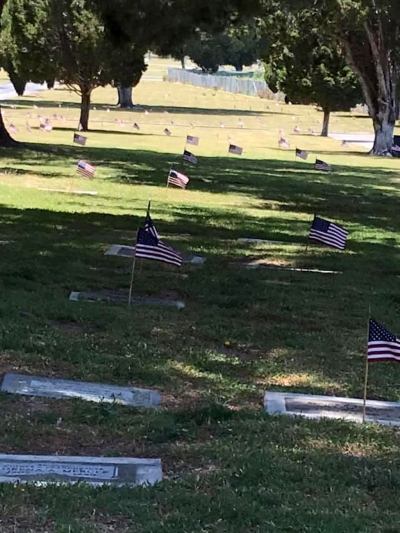 Every Memorial Day at Bardsdale Cemetery it is tradition to decorate Veterans’ graves with American flags to honor their service. Photo courtesy Bardsdale Cemetery District Facebook page. Enlarge Photo Courtesy Fillmore Historical Museum The origins of Memorial Day are somewhat in dispute, but most agree that the tradition of decorating veteran’s grave originated in the South and was soon adopted by the North after the Civil War. The date of May 30th may have been chosen as an optimal date for flowers to be in bloom in the North. If you walk through Bardsdale Cemetery you will see a few plots of Civil War Veterans, a few Spanish – American War Veterans, and then more and more World War I and World II Veterans, Korean and Vietnam Conflict Veterans. At the Museum we have some memorabilia from all these wars/conflicts that tell the story of men and women from Fillmore who served. We are especially lucky to have photos of World War II servicemen and womencollected by A. H. “Painter” James. World War I is not as well documented, but we do have a few items that tell stories. One solder we know about is Albert “Heck” Smith. Heck was born in Fillmore in 1896 to Walter and Ella Robertson Smith. His sister, Mildred, was born in 1901 and his mother passed away in 1903. His father remarried a few years later. Heck and Mildred were raised by their maternal aunts, Lucy Permelia and Neva Robertson in Bardsdale. The Robertson Family had come to the Valley in the 1870s. When the United States entered World War I in 1917, Heck entered the U. S. Army. He left New York City on July 12, 1918 as a Private in Machine Gun Company C, 364th Infantry. He remained in France until March, 1919, returning as a Private, First Class. Although he was not in France for a year, Heck would have seen some of the most intense fighting. His unit was involved in the Argonne Offensive which, according to Wikipedia, “…was the largest in United States military history, involving 1.2 million American soldiers. It is the second deadliest battle in American history, resulting in over 350,000 casualties including 28,000 German lives, 26,277 American lives and an unknown number of French lives.It was for his actions during the Argonne Offensive that Heck was awarded the Distinguished Service Cross, the second highest military honor given by the United States has. Like most solders, he was probably most concerned with staying alive, but in a letter to his sister, Mildred, he wrote the following. “Well, I was going to keep this a secret from you till I got home but I have decided to tell you that I am going to receive a Distinguished Service Cross. I suppose you want to know what I did. Well, I went out into No Man’s Land one night and helped bring in a wounded soldier. Went out about 500 or 600 yards and carried him in on two slickers and two rifles which were used as a stretcher…. I was surprised when my captain told me of (the award). He asked for volunteers and I said I would go. It didn’t seem any more than going on some errand I was told to do.” At the Museum we have both the Croix de Guerre and Distinguished Service Cross citations which were issued to Heck and also the actual Distinguished Service Cross medal. Heck returned home, married Marion Jorgenson and settled down in Fillmore. He worked at the Texaco Refinery as a boiler fireman, bought property in Bardsdale and raised citrus. The Smiths had two children, Milton and Dorothy Elaine. Milton graduated from Fillmore High School in 1940. By 1942, he was in the US Navy. He served in the Pacific as a Naval Officer. We have not been able to find his service records to give more detail to his Naval career, but we do have his Naval uniform on display along with his father’s memorabilia. These were just two of many men and women from Fillmore and throughout the country who have served their country in its times of need. Memorial Day is our time to remember and honor them. |
|
By Anonymous — Wednesday, May 19th, 2021
 On Saturday, May 15th, the City of Fillmore and National Alliance on Mental Illness (NAMI Ventura County) hosted a Mental Health Awareness and Social Services Resource Fair in front of Fillmore’s City Hall. The fair was to help erase the stigma surrounding mental health and share information about mental health resources with Fillmore and Piru residents. Activities included a community bike-ride/walk, followed by a mental health and social service resource fair and a community-led sharing of stories to raise awareness about mental health. Pictured above is a group photo of all who participated in this past weekends events. Inset, a group getting ready head out for the Bike-Ride/Walk to support mental health awareness. Photos courtesy Fillmore City Council Member Christina Reyes-VillaSenor. Enlarge Photo |
|
By Anonymous — Wednesday, May 19th, 2021
 On Saturday, May 15th at 10:10am, nearly a half dozen Sheriff ’s deputies responded to an incident at the Best Western La Posada Motel on Highway 126 in Fillmore. A 38-yearold man who may have been experiencing a drug related psychosis was on the motel roof, removing and throwing clay tiles into the parking lot and onto Highway 126, slowing westbound traffic. Police requested a drone and two K-9 police dogs, and also called for family members to help get the man to cooperate. Sheriffs were finally able to get the man down by using a motel room window to climb onto the roof and handcuff him. By 11:30am authorities were able to make an arrest on suspicion of a felony vandalism offense and misdemeanor resisting, trespassing and drug violations. Enlarge Photo |
|
By Anonymous — Wednesday, May 19th, 2021
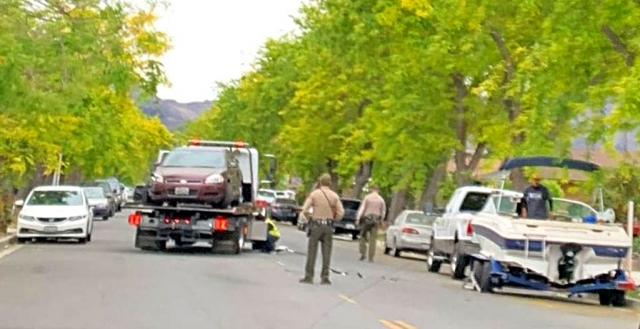 At approximately 5:30pm on Sunday, May 16th, a car hit a parked boat on B Street, south of Sespe Avenue. The boat and another parked car sustained some damage; one car was towed away. Sheriffs blocked off B Street for an hour until the accident was cleared. Enlarge Photo |
|
By Anonymous — Wednesday, May 19th, 2021
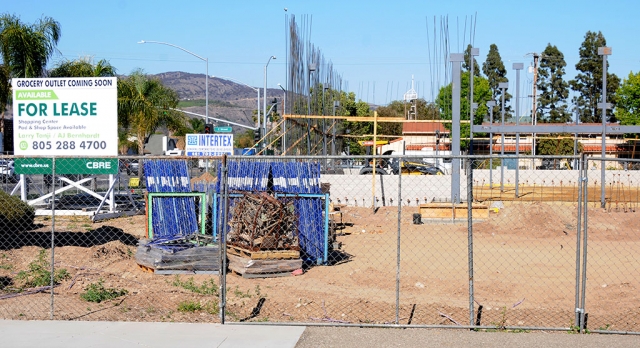 Progress moving fast at the Grocery Outlet construction site at the corner of Ventura and C Street near Fillmore’s Dollar General. Poles, rebar and cement blocks can be seen starting to go up. Enlarge Photo |




